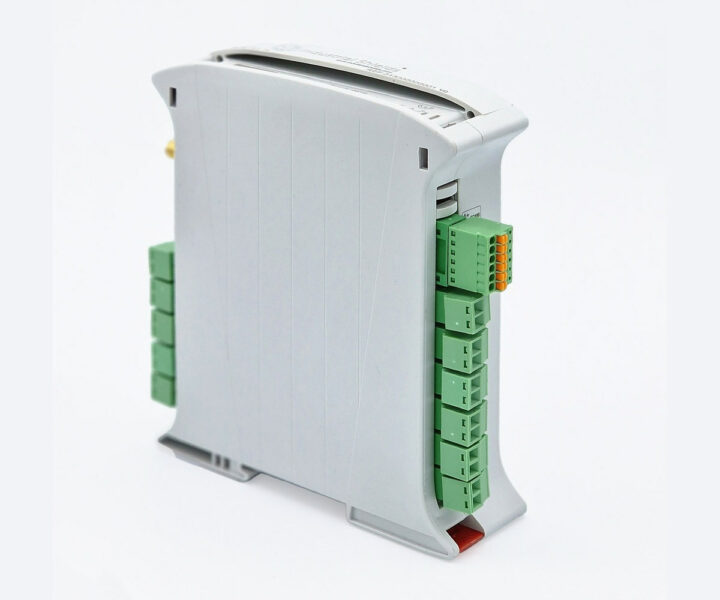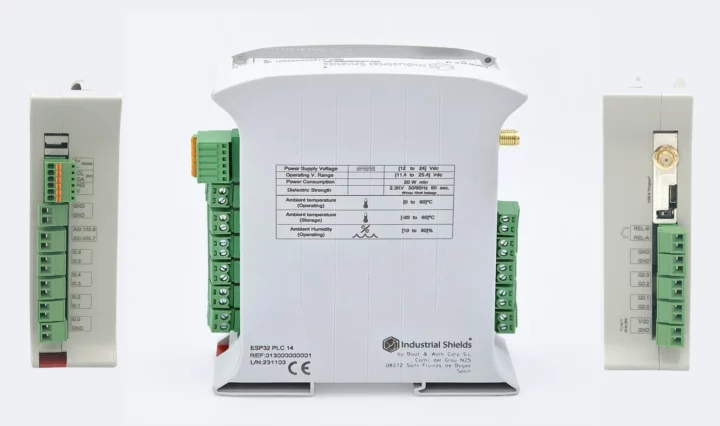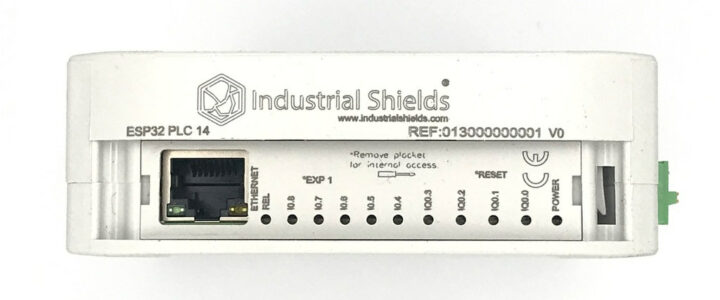Boot & Work Corp has just introduced an entry-level PLC based on ESP32 wireless microcontroller with the “Industrial Shields ESP32 PLC 14” that comes with seven inputs and five outputs, as well as I2C, RS485, Ethernet, WiFi, and Bluetooth communication interfaces.
We first covered “Industrial Shields” automation devices in 2017 when the company introduced panel PCs based on Banana Pi, Raspberry Pi, and Hummingboard (NXP i.MX 6) SBCs, as well as a few Arduino and Raspberry Pi PLCs. Boot & Work Corp then launched a Raspberry Pi 4-based PLC in 2021, and now the company has introduced the ESP32 PLC 14 part of a larger family of PLC devices as we’ll see further below.
ESP32 PLC 14 specifications:
- Wireless module – ESP-WROOM-32U with ESP32 dual-core wireless microcontroller @ 240 MHz with 4MB SRAM, 4MB flash, 2MB PSRAM
- I/Os through terminal blocks
- 4x Digital Outputs 12/24 V DC (can also act as Digital Inputs 3.3 to 24V DC)
- 1x Relay Output 48V DC at 3A max / 220V AC at 5A max
- 2x Analog Inputs (0-10V DC/4-20mA)
- 2x Analog Inputs (0-10V DC) (can also act as Digital Inputs 3.3 to 24V DC)
- 3x Digital Inputs (3.3 to 24V DC)
- Communication interfaces
- 10/100M Ethernet port
- 6-pin terminal blocks for RS485 (Modbus RTU) and I2C
- 2.4 GHz WiFi and Bluetooth via ESP32 microcontroller and external antenna
- Optional support for cellular (NB-IoT, GPRS, 2G, 3G, 4G), CAN Bus, and/or LoRa connectivity
- USB port – Micro USB port for programming
- Power Supply – 12V to 24V DC via 2-pin terminal block
- Power Consumption – 8W rated power; “20W min” shown on plastic enclosure
- Dimensions – 100x45x115 mm
- Temperature Range – Operating: 0 to +60°C; storage: -20 to +60°C
- Humidity – 10 to 90% RH
Industrial Shields ESP32 PLC devices are supported in the Arduino IDE with code based on the Wiring open-source electronics platform for microcontrollers. The company provides the following “board URL” for “industrialshields-esp32” boards to be added to the Arduino IDE:
|
1 |
http://apps.industrialshields.com/main/arduino/boards/package_industrialshields_index.json |
They also provide some Arduino code samples for their ESP32 controllers and highlight support for Node-RED with some documentation for SCADA applications.
Typical use cases for the ESP32 PLC include monitoring, control, and automation of machines, alarms, elevator control, and product lines, more specifically the fans, pumps, air conditioning, full HVAC solutions, and AC and DC motors used in those installations.

As noted in the introduction, the ESP32 PLC 14 is the entry-level model of a larger Industrial SHields ESP32 PLC family with the top model offering 37 inputs and 24 outputs as you can see in the table above.
Boot & Work Corp sells the ESP32 PLC 14 for 99.95 Euros , but you can also add a communications board with CAN Bus, cellular connectivity, LoRa, GPS, or Dali Bus system for 55 to 113.55 Euros. Further information may be found on the product page.

Jean-Luc started CNX Software in 2010 as a part-time endeavor, before quitting his job as a software engineering manager, and starting to write daily news, and reviews full time later in 2011.
Support CNX Software! Donate via cryptocurrencies, become a Patron on Patreon, or purchase goods on Amazon or Aliexpress







